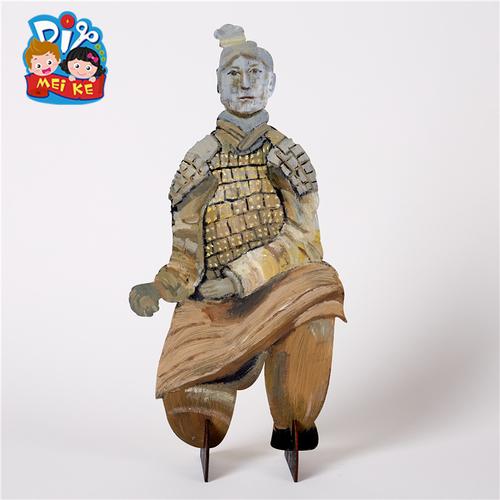
What Material are the Terracotta Warriors Made of?
The Terracotta Army is one of the most iconic archaeological discoveries of all time, and a testament to the power and ingenuity of the ancient Chinese civilization. These life-size clay soldiers, chariots, and horses stand guard over the tomb of Qin Shi Huang, the first emperor of China, and offer a glimpse into the military might and artistic skill of his reign. But what exactly are these figures made of, and how were they crafted with such incredible detail and precision?
The Material: Terracotta Clay
The term "Terracotta" comes from the Italian dictionary meaning "baked earth," essentially referring to ceramic pottery. It is made from a fairly coarse, porous type of clay that is high in iron oxides. This specific type of clay is found abundantly in the region surrounding Xi'an, where the Terracotta Army was unearthed.
Here's a breakdown of the key characteristics of terracotta clay:
- Availability: Easily accessible in the region, making it a practical choice for a large-scale project.
- Workability: Terracotta clay is very malleable when wet, allowing artisans to shape it into intricate forms and details.
- Durability: Once fired, terracotta becomes hard and relatively resistant to erosion, making it suitable for creating long-lasting sculptures.
- Color: The high iron oxide content gives terracotta its characteristic reddish-brown color, although the exact shade can vary depending on the firing temperature and the presence of other minerals in the clay.
The Crafting Process: From Clay to Warrior
Creating the Terracotta Army was a monumental task, involving thousands of laborers and skilled artisans over several decades. The process involved several stages:
-
Clay Preparation: The raw clay was first mined from the surrounding area and then carefully prepared. It was cleaned to remove impurities like pebbles and organic matter, then mixed with water and kneaded to achieve a uniform consistency.
-
Molding and Sculpting: While some smaller sections might have been made using molds for efficiency, the majority of each warrior was individually sculpted by hand. This is evident in the unique facial features, hairstyles, and armor details of each figure.
-
Assemblage: The warriors were not sculpted as single, solid pieces. Instead, they were constructed from multiple hollow sections – the head, torso, arms, and legs were all made separately and then assembled. This method, along with the use of internal supporting structures, helped to prevent cracking during the firing process.
-
Firing: Once the clay sculptures were complete, they were fired in kilns at temperatures between 800-1000 degrees Celsius. The firing process hardened the clay, turning it into the durable ceramic we see today.
-
Painting and Detailing: After firing, the warriors were meticulously painted with vibrant pigments, adding another layer of realism to their appearance. Traces of paint suggest that they were once brightly colored, further highlighting the craftsmanship involved in their creation.
The Significance of Terracotta
The choice of terracotta for the Terracotta Army was not merely practical but also symbolic. The reddish-brown hue of the clay resonated with the color of the earth, representing life and death in ancient Chinese culture. Moreover, the durability of the material reflected the emperor's desire for his legacy and his army to last for eternity.
Q&A
1. Why didn't the Terracotta Army's paint survive fully intact?
Exposure to air, moisture, and changes in temperature over centuries caused much of the original paint to flake off. Additionally, the rapid excavation of the figures in the 20th century led to some paint loss due to sudden environmental changes.
2. Are all the Terracotta Warriors identical?
No, despite being part of an army, each warrior is unique. They vary in height, facial features, hairstyles, armor, and even expressions, showcasing the remarkable skill and attention to detail of the Qin dynasty artisans.
3. Is the Terracotta Army still being excavated today?
Yes, archaeological work at the site is ongoing. New pits containing warriors, chariots, weapons, and other artifacts are still being discovered and carefully excavated, providing further insights into this fascinating period of Chinese history.